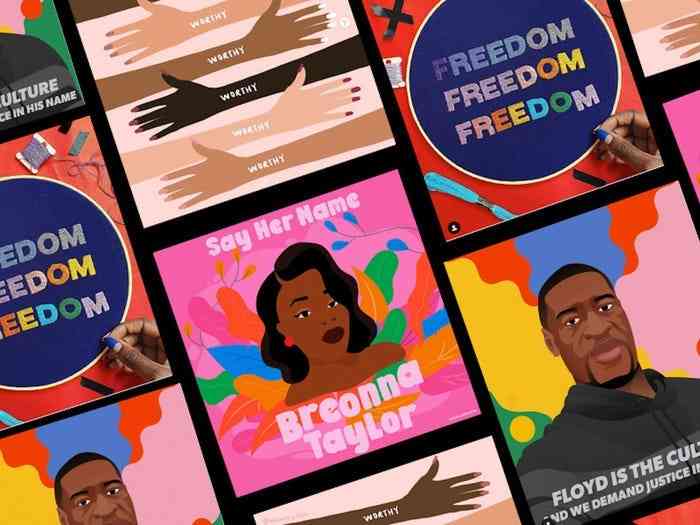Page Contents
In the digital age, social media has emerged as an irreplaceable tool for modern advocacy. From grassroots movements to global campaigns, these platforms have given a voice to those who once felt unheard, enabling individuals and communities to mobilize, inform, and inspire change at unprecedented scales. Platforms such as Twitter, Instagram, and TikTok have democratized information dissemination, making it possible for even a single tweet or video to spark global conversations.
While the general populace has embraced the power of social media, there’s a particularly vibrant segment that remains an untapped reservoir of potential: the youth. Representing not just the future but a significant portion of the present, young individuals hold a perspective that’s fresh, raw, and in many ways, untainted by the cynicism that can sometimes accompany age. Just as a dissertation writer offers a unique and well-researched perspective on a chosen topic, the youth offer a blend of passion, authenticity, and digital nativity that can breathe life into social media campaigns.
Thus, leveraging student voices isn’t just a trending hashtag; it’s a strategy that holds the promise of reshaping the social media advocacy landscape. With their fingers on the pulse of what’s relevant, students can drive conversations that truly resonate.
The Rise of Youth Activism in the Digital Age
Historically, youth have been at the forefront of numerous transformative movements. They have questioned, rebelled, and, more importantly, aspired for a better tomorrow. The digital age has only amplified their influence. For instance, Greta Thunberg, a Swedish teenager, used the power of social media to advocate for urgent action on climate change, galvanizing millions of youth and adults alike across the globe. What began as a lone protest outside the Swedish parliament transformed into a global ‘Fridays for Future’ movement, largely due to the virality and reach of social media.

Such is the impact of youth-driven movements in the digital era. While earlier generations had to rely on slower, more traditional means of communication, today’s youth can spread a message across continents within hours. Their innate understanding of digital platforms, combined with a genuine desire for change, positions them uniquely in the advocacy space.
Understanding the Youth Perspective
To leverage the power of youth in social media campaigns, one must first understand their unique perspectives and priorities. This generation, primarily comprising Gen Z and young Millennials, grew up in a world defined by rapid technological advancements, global connectivity, and increasing social awareness. Their worldviews are shaped by an amalgamation of these factors, leading to a rich tapestry of ideas that range from socio-political issues to cultural inclusivity and environmental concerns.
Their priorities often challenge the status quo. They push for more inclusive representation in the media, demand sustainable business practices from corporations, and raise their voices against systemic issues such as racism and inequality. Their perspective, thus, is not just about ‘trending topics’ but about a deep-rooted desire to see a more just, inclusive, and sustainable world.
Furthermore, the authenticity and relatability that young voices bring to the table cannot be understated. They speak not from a position of detached observation but from lived experiences. When they share stories, whether of triumph or tribulation, they resonate deeply with their peers, making their narratives both powerful and persuasive in the vast digital arena.
You May Also like to Read: Instagram for Students: Top 6 Reasons for its Popularity
Why Students Are the Key Players in Social Media Campaigns
Students, with their boundless energy and digital intuitiveness, are often the heartbeat of online platforms. Here’s why they’re indispensable to any robust social media campaign:
1. High Engagement Rates
Young users dominate platforms like TikTok, Instagram, and Snapchat. Their activity isn’t limited to passive consumption. They create, comment, share, and engage at rates unparalleled by older generations.
2. The Power of Peer Influence
Young people trust their peers. When a student shares an initiative or a cause, it isn’t perceived as corporate propaganda or a marketing gimmick. It’s seen as a genuine recommendation, a call to action from a trusted source.
3. Digital Storytelling
Growing up in the age of vlogging, memes, and short videos, students have developed a knack for crafting compelling narratives in the digital space. Their stories are often visually captivating, emotionally resonant, and perfectly suited for the short attention spans of online audiences.
Read More: Pros and Cons of Social Media for Students: Navigating the Digital Landscape
Challenges and Criticisms of Youth Involvement in Digital Campaigns
While the advantages of involving youth in digital campaigns are manifold, there are challenges and criticisms to consider:
Digital Burnout and Mental Health Implications
The constant pressure to stay updated, engage, and respond can lead to digital fatigue. Prolonged exposure and involvement can exacerbate mental health issues, especially if the cause or campaign deals with sensitive topics.
Accusations of ‘Slacktivism
Critics often dismiss digital activism as superficial or ineffective. They argue that sharing a post or changing a profile picture does little to effect real-world change. While there’s a grain of truth in this criticism, it’s also essential to acknowledge that every movement starts with awareness. Digital engagement can be a stepping stone to more tangible actions.
Navigating Exploitation
Brands and organizations must be cautious not to exploit the passion and energy of young activists for commercial gain. Authenticity is paramount, and campaigns should genuinely align with the causes they’re championing.
Each of these sections offers an insight into the central role of students in shaping the landscape of social media campaigns. While the potential is immense, it’s equally crucial to approach this potential with respect, understanding, and genuine intent to effect change.
Best Practices: How to Effectively Engage Student Voices
Successfully integrating student voices into social media campaigns necessitates a genuine understanding of their values, motivations, and concerns. Here are some best practices to follow:
Collaborative Campaign Design: Instead of dictating the narrative, organizations should involve students in the conceptualization and execution stages. This fosters a sense of ownership and ensures the campaign resonates with the intended audience.
Education and Training: While students are digitally savvy, they may benefit from training in specific advocacy skills, such as crafting persuasive narratives, digital security, or even understanding the nuances of a particular cause.
Safe Spaces: It’s crucial to create environments where students feel safe to voice their opinions. They should be shielded from online harassment and given the tools to manage negative feedback, ensuring their mental well-being isn’t compromised.
Read More: How to Promote Your Aesthetic Study Blog on Instagram (7 Best Tips Revealed)
Conclusion
In the vast ecosystem of social media campaigns, the authentic and potent voices of students stand out, much like how the best dissertation writing services distinguish themselves through quality and depth. Their narratives, values, and unparalleled digital skills make them invaluable assets in the advocacy space. As with any resource, however, the onus is on brands, organizations, and even individuals to approach this potential with respect and genuine collaboration.
The narrative of change is continuously being written, and students, with their unwavering spirit and digital prowess, are penning crucial chapters. As stakeholders in today’s rapidly evolving world, it is our collective responsibility to ensure that these voices are not only heard but amplified, celebrated, and acted upon.
FAQs on Youth Activism on Social Media
1. How have youth-driven movements historically influenced advocacy, and how has the digital age amplified their impact?
Historically, youth have played a pivotal role in leading transformative movements, challenging norms, and advocating for change. Their energy, passion, and fresh perspectives have often been catalysts for societal shifts. In the past, student-led movements have played roles in civil rights movements, anti-war protests, and other significant global events.
In the digital age, the influence of youth has been supercharged by their adeptness with online platforms. Digital tools have given them unprecedented reach and speed, enabling movements to go global almost overnight. A prime example is Greta Thunberg’s ‘Fridays for Future’ movement; what began as a solitary protest became a worldwide phenomenon, largely because of the virality and reach of social media.
Essentially, while the fervor of youth-driven advocacy remains consistent, the digital age has magnified its voice and reach.
2. What are the main challenges and criticisms faced by youth involvement in digital campaigns, and how can they be addressed?
Youth involvement in digital campaigns, while powerful, faces a few challenges. One primary concern is digital burnout and the potential mental health implications stemming from prolonged online exposure, especially when dealing with sensitive topics.
Additionally, digital youth activism often confronts accusations of ‘slacktivism,’ wherein critics argue that online actions might lack real-world impact. Finally, there’s the risk of exploitation, where brands might leverage the passion of young activists without genuine intent.
To address these challenges, it’s crucial first to recognize the legitimacy and potential of digital activism. By providing education, training, and support, young activists can better navigate online spaces and transition digital advocacy to tangible actions.
Furthermore, campaigns should prioritize authenticity and meaningful engagement, ensuring youth voices are amplified with respect and genuine collaboration.





